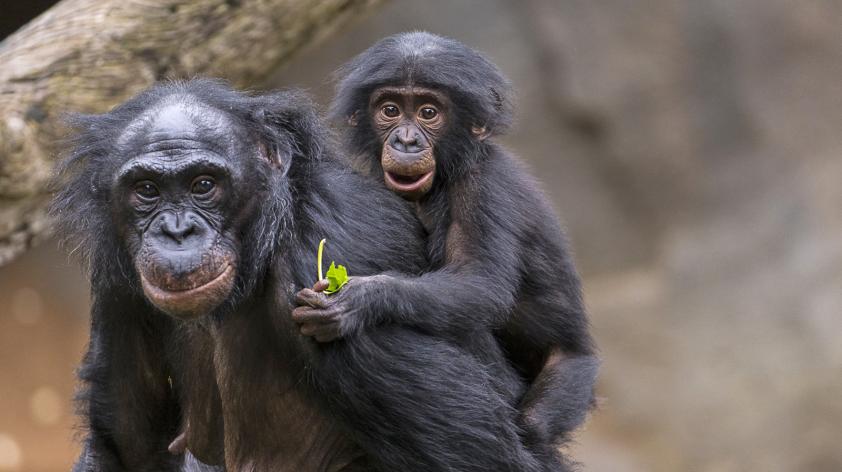
Great Ape Paternity Analysis
Every year the Conservation Genetics group at the San Diego Zoo Institute for Conservation Research receives requests for great ape paternity analysis from collaborating zoos. These include requests for paternity determination in chimpanzees and bonobos, and occasionally gorillas and orangutans.
Why do we perform paternity analysis for great apes at our zoo and others? Chimpanzees (Pan troglodytes) and their cousins bonobos (Pan paniscus) live in multi-male, multi-female groups that mimic the social groups they would form in the wild. While keepers can monitor their behavior much of the time, they cannot always be sure who is the father, or sire, of a particular newborn. The mother, or dam, is much more obvious, but even that can be uncertain if more than one female gives birth or cares for an infant.
In gorilla (Gorilla gorilla) troops, usually the dominant male, or silverback, is the sire of all new babies, but occasionally younger males just reaching maturity can surprise us by fathering offspring as well. And while orangutans (Pongo pygmaeus and P. abelii) are the most solitary of the great apes, they can be housed together in zoos, providing opportunities for multiple males in a group to breed. It’s crucial for us to know the lineage of each individual to avoid inbreeding and maintain a genetically healthy population.
The methods we use for paternity in great apes are borrowed from human biomedical research and take advantage of the genetic similarity of humans and great apes. We even use the same DNA markers that are routinely used in human paternity analysis. These markers, called microsatellites, are strings of repetitive DNA strewn about our genome, and they come in different forms, or alleles.
A person inherits one allele from his mother and one from his father. Similarly in great apes, if we know the allele a baby great ape inherited from its dam, then it had to get the other from its sire, and we can test the DNA of the potential sires to find the one with the matching allele. If we do this for multiple markers, we can exclude potential sires that lack the correct alleles and narrow down our search to the true sire. All we need is a tiny hair follicle from each individual, and we can extract all the DNA necessary to perform this important test!
We then give the paternity results to keepers and animal care managers, who use the information to decide which individuals should be bred to maintain genetic diversity in the population. Sometimes this information confirms the keepers’ expectations, and sometimes it reveals unforeseen pairings or faulty contraception. All information crucial to maintaining healthy great ape populations!













